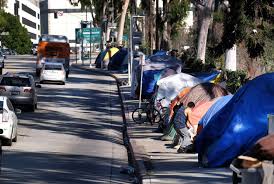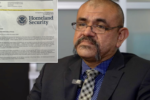Los Angeles, CA – In a bold effort to address one of the most pressing social issues in the city, Los Angeles officials have unveiled a comprehensive plan to combat homelessness. The new initiative, which includes a mix of housing programs, mental health services, and employment opportunities, aims to provide long-term solutions for the thousands of unhoused residents in the city.
A Growing Crisis
Los Angeles has long struggled with homelessness, with the latest count from the Los Angeles Homeless Services Authority (LAHSA) indicating that over 75,000 individuals are experiencing homelessness across Los Angeles County. The crisis has been exacerbated by soaring housing costs, economic instability, and a lack of adequate mental health and substance abuse resources.
City officials have acknowledged that previous measures have fallen short in significantly reducing the homeless population, necessitating a more aggressive and comprehensive approach.
Key Features of the Plan
The newly announced plan, spearheaded by Mayor Karen Bass, focuses on three core areas: rapid housing, supportive services, and preventive measures.
1. Rapid Housing Expansion
A significant portion of the initiative revolves around increasing access to affordable and permanent supportive housing. The city plans to allocate substantial funding to the California Department of Housing and Community Development to accelerate the construction of new housing units and repurpose vacant properties into shelters and transitional housing.
Additionally, the city has partnered with private developers and nonprofit organizations to streamline housing projects through zoning and regulatory reforms. These efforts aim to cut through bureaucratic red tape and speed up housing availability.
2. Comprehensive Support Services
Recognizing that housing alone is not enough, the initiative includes a robust network of social services. The Los Angeles County Department of Mental Health will expand its outreach programs, providing mental health counseling, addiction treatment, and medical care for those in need.
Furthermore, employment assistance programs will be launched in collaboration with the California Employment Development Department, offering job training and placement services for individuals transitioning out of homelessness. The initiative also prioritizes assistance for veterans, youth, and families at risk of losing their homes.
3. Preventive Measures and Policy Reforms
To prevent more people from falling into homelessness, the city is increasing its investment in rental assistance and eviction prevention programs. The California Housing Finance Agency will oversee expanded rental relief funds, providing financial aid to tenants facing hardship.
Additionally, policymakers are pushing for stricter regulations on rent control and tenant protections to curb unfair evictions and price hikes that contribute to housing insecurity. Efforts are also underway to address systemic issues within the criminal justice system that disproportionately impact the unhoused population.
Community and Stakeholder Reactions
The ambitious plan has received mixed reactions from various stakeholders. Homeless advocacy groups, such as the Los Angeles Homeless Services Authority, have praised the initiative, calling it a “much-needed step in the right direction.” However, some residents and business owners have expressed concerns over the potential costs and effectiveness of the programs.
“This is a crisis that requires urgent action, and we are finally seeing a real commitment from city leaders,” said Michael Johnson, director of a local shelter. “But the real test will be in the implementation.”
On the other hand, critics argue that without strict oversight and measurable progress, the plan could fall into the same pitfalls as previous efforts. “The city has promised solutions before, but the problem keeps getting worse,” said Lisa Carter, a small business owner in downtown Los Angeles. “We need accountability to ensure this initiative actually helps people and doesn’t just create more government spending.”
Funding and Implementation Challenges
The success of the initiative hinges largely on securing sustained funding. The city has already committed millions of dollars, with additional support expected from state and federal programs, including grants from the U.S. Department of Housing and Urban Development (HUD). However, officials acknowledge that long-term funding solutions will be necessary to maintain these programs over the years.
Logistical challenges also remain, particularly in acquiring land for housing developments and ensuring the efficient delivery of services. Officials are working closely with community organizations and private sector partners to address these barriers.
Looking Ahead
The road ahead will be challenging, but city leaders remain optimistic about the potential impact of this initiative. Mayor Bass emphasized that combating homelessness requires a collective effort from government agencies, businesses, nonprofits, and residents alike. “We cannot allow this crisis to continue unchecked. This plan represents our commitment to making meaningful, lasting change for the people of Los Angeles.”
With a structured approach and a renewed sense of urgency, Los Angeles hopes this ambitious strategy will serve as a model for other cities grappling with similar homelessness crises. As implementation begins, all eyes will be on the city to see whether this initiative can turn the tide on an issue that has defined urban life in Los Angeles for far too long.
Disclaimer – Our team has carefully fact-checked this article to make sure it’s accurate and free from any misinformation. We’re dedicated to keeping our content honest and reliable for our readers.








